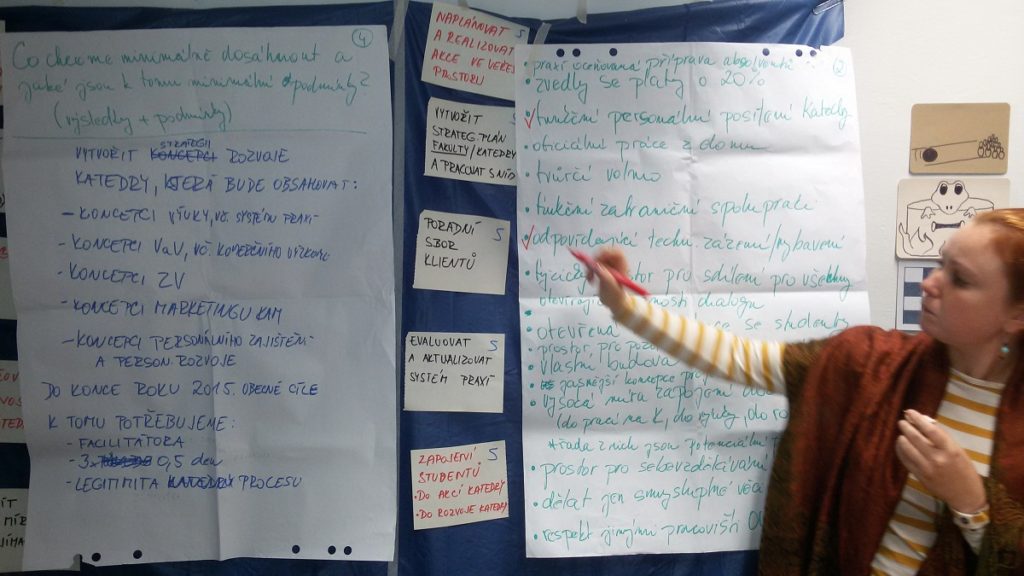These are a set of methods, each one applicable in a different situation and with different aims, to be used when working with groups. They are not complex, and once you know them, you can adjust them and apply them in your own trainer or facilitator practice. All of them have in common that they provide space to use the potential (ideas, opinions, …) of all participants of the workshop, training or meeting.
Technology of Participation ® (ToP)
The set of methods described below are based on the Technology of Participation. This video shows a brief summary:
If this looks interesting, don’t hesitate to contact me for more details about these methods and possible topics for training for your organisation, team or group. Under “Portfolio” you can find examples of projects in which participatory approaches played a key role.
If you are interested in more details on how these methods work and when to use them: continue reading on this page, below the picture!

The Consensus Workshop Method
Summary: The Workshop Method can be used on its own, or as part of a larger participatory training session or workshop, like for example Participatory Strategic Planning. The method is aimed at finding solutions for certain situation of issues. An important characteristic of the workshop method is, that it brings clear outcomes, including a plan of action. In this way the method prepares the participants to implement the findings from the session in practice.
When to use: In situation when you want to get clarity as a group about a certain issue, to enable you to go ahead with it.
The Focused Conversation Method
Summary: The Focused Conversation Method is a discussion method. By using specific type of questions, the facilitator of the discussion directs the participants towards sharing facts (Objective), emotions/feelings (Reflection), to analyse or evaluate (Interpretation) and to take action (Decide).
When to use: It is a good method to evaluate an action (event, training, workshop, any other group activity) with a group, to make sure the participants process the experience and point them towards action.
Mapping
Summary: This method is meant to demonstrate that we all have different mental maps and to get common understanding about resources, knowledge, locations and others things we have in the community or work environment. In a MAPPING workshop, which is very interactive, the participants exchange their experience about this and get new insights.
When to use: When you are with a team or working group, and you want, in a systematic way, exchange opinions and/or knowledge about a certain area.
Preference Ranking
Summary: This method helps a group to highlight how criteria for choices are made by the group and individuals. It also helps to highlight the importance of exploring the existence of key differences in preference between individual group members.
When to use: When you are with a group (management, team, working group, community meeting) and you want not only to get clear on what you prefer as a group, but also explore the opinions of the different members on the given topic and possible choices.
Community Action Planning
Summary: A simple but effective method to plan a specific activity.
When to use: It is a useful if you want to make the planning process interactive and full of discussion, without losing track of what you want to reach. The method is also very helpful when you are planning an activity with a group of people who are not used to plan systematically, to work with goals, etc.
The Open Space Method
Summary: Open Space is a large-group process that helps participants focus energy on issues or opportunities of interest, and collectively design appropriate courses of action. It is a effective method when it has not been pre-defined what are the topics to work on, or the actions which needs to be taken.
When to use: It is a method which can be used when working with large groups, when you have a common topic or theme, and you want the participants to decide what are the topics they are passionate about and for which topics they would like to take responsibility.